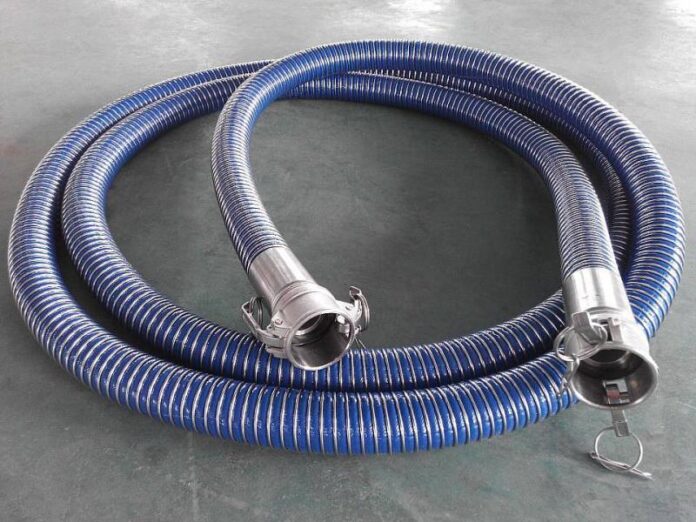Composite hoses are a type of flexible hose designed to transfer a range of liquids and gases from one place to another.
They’re more adaptable than others of their kind due to being constructed with a range of different materials – allowing for more versatile use.
But which applications are they best suited to?
Find out more in this post.
What are composite hoses made from?
Composite hosepipes use a spiral of sturdy wire wrapped around layers of polymers, film, and other materials, with the second spiral of wire fully binding the hose.
Following this ‘Mandel Wrapped’ principle creates a robust composite hose with much higher pressure resistance.
Whether they’re made out of galvanised or stainless steel, aluminium or polymer-coated alloy, composite hoses are the safest, most reliable, flexible hose on the market.
Why should I use them?
Because they’re so versatile, composite hoses are usually better suited to industrial applications.
Different industries can customise flexible hoses according to their unique requirements, and they’re suitable for carrying a variety of strong chemicals thanks to their impressive pressure, temperature and vacuum resistance.
Their multiple layers also decrease the risk of pipes bursting because there’s no direct path for leaks, and if a leak does occur, the build-up will be visible from the outside, allowing you to address the issue as soon as possible.
What exactly can I use them for?
From residential properties to industrial areas, composite hoses are everywhere, and they have an abundance of uses – including air ventilation in tight public spaces, and piping for kitchens, bathrooms and even fire engines.
As previously stated, flexible hoses are most commonly used in industries that handle hazardous substances – to get them from A to B in the safest way possible.
They tend to come in handy in the following areas:
Power plants – moving, delivering or refining pressurised liquids and gases
Liquid and gas fuels – petroleum, kerosene, diesel, crude oil and other hydrocarbon products
Rail cars and tankers – transferring chemical fuels to and from vehicles
Ship-to-ship or ship-to-shore – loading or unloading at piers or port terminals
Chemical production – solvents, paints, acids, alkalis, pharmaceuticals
Food production – transporting hot water or oils
Agriculture – irrigating crops and fuelling harvest machines
Cryogenics – conveying low-temperature products, including ethylene, propene, liquified gases or dry ice
Purchase composite hoses online
Ready to purchase your own composite hose? Why not browse and order online from a trustworthy supplier, like Proflex Hose?
They have a variety of sizes available to suit your bespoke requirements – ranging from 1” to 4”, reaching lengths of up to 20m.
No matter your needs they’d be more than happy to assist you.
Get in touch with the team today for more information!

































